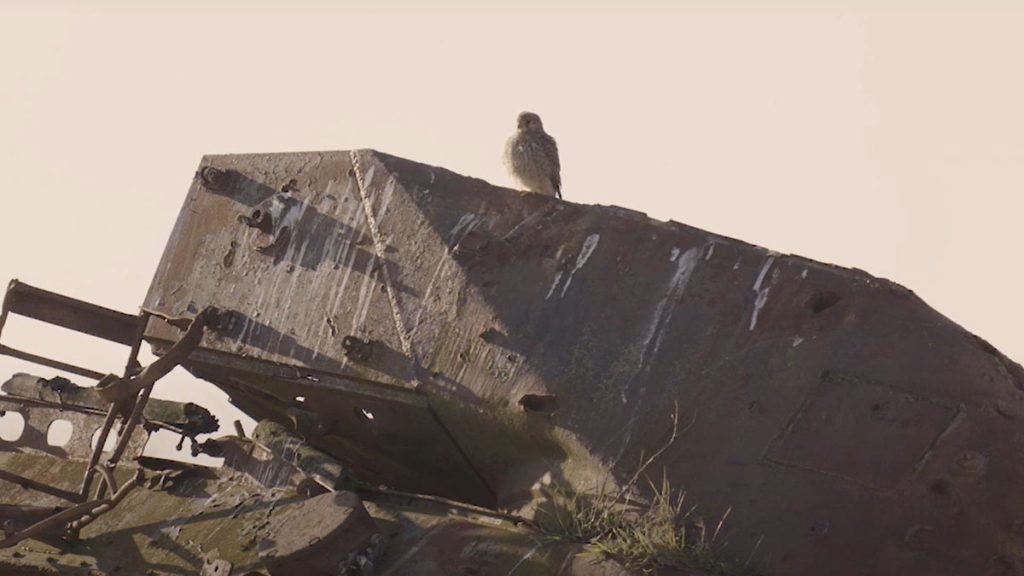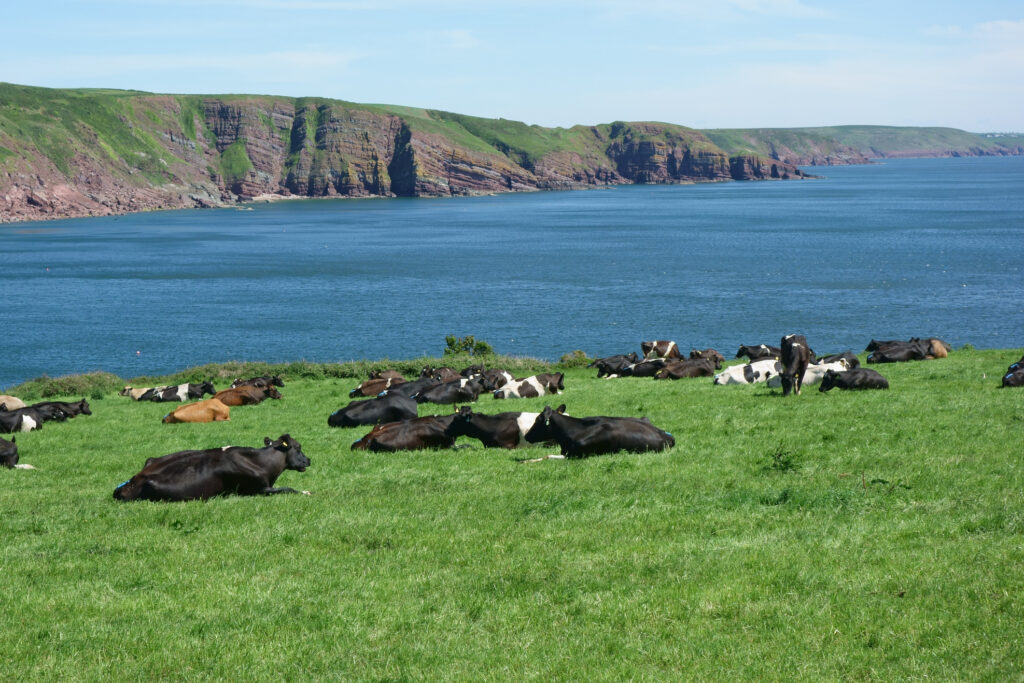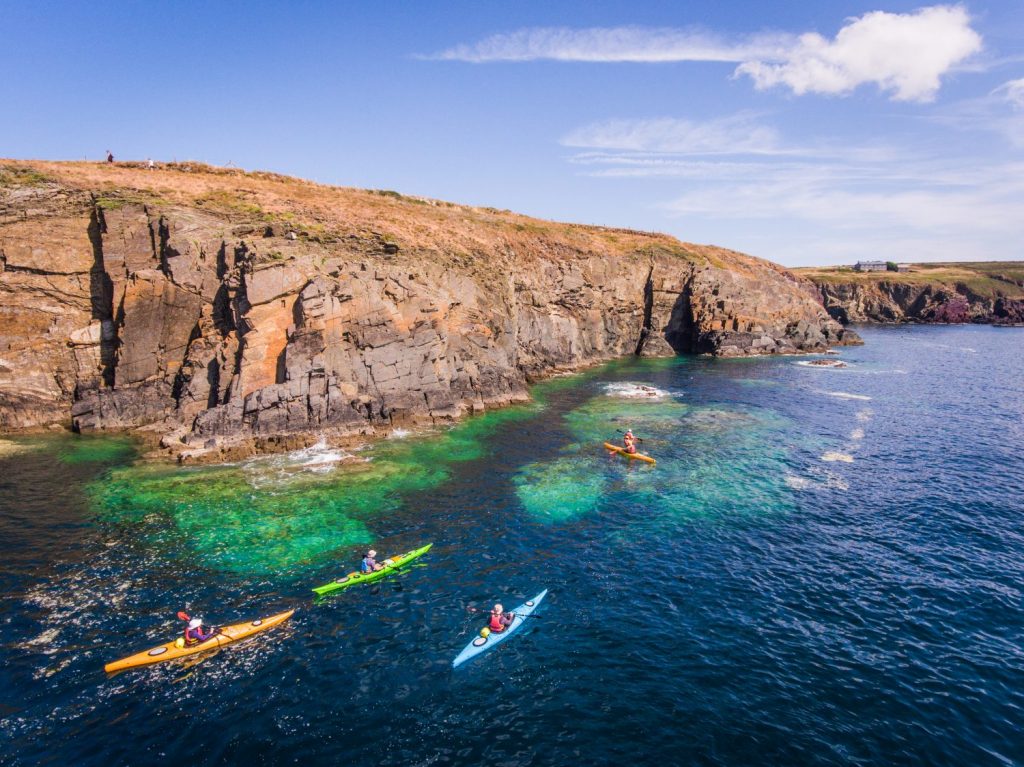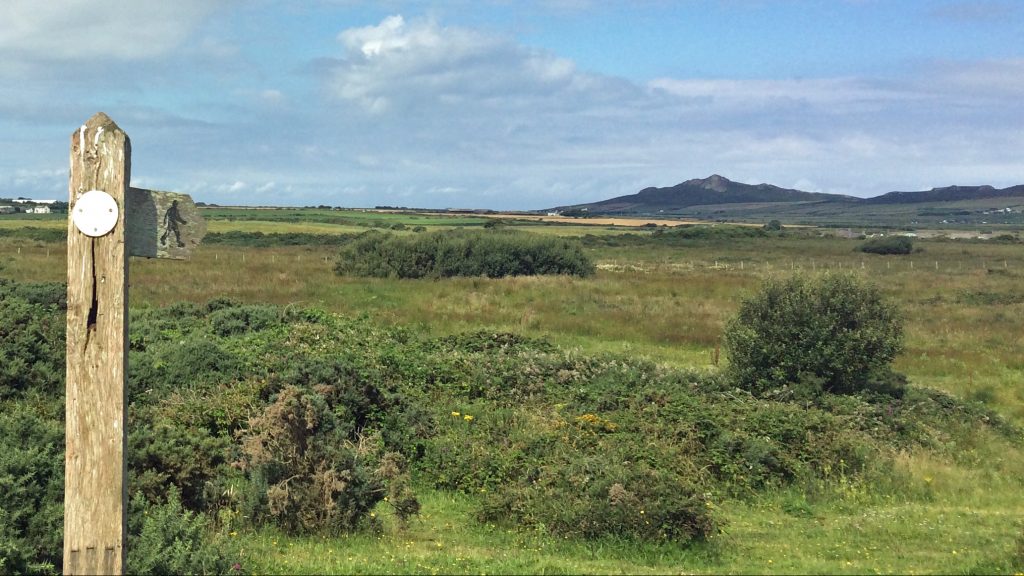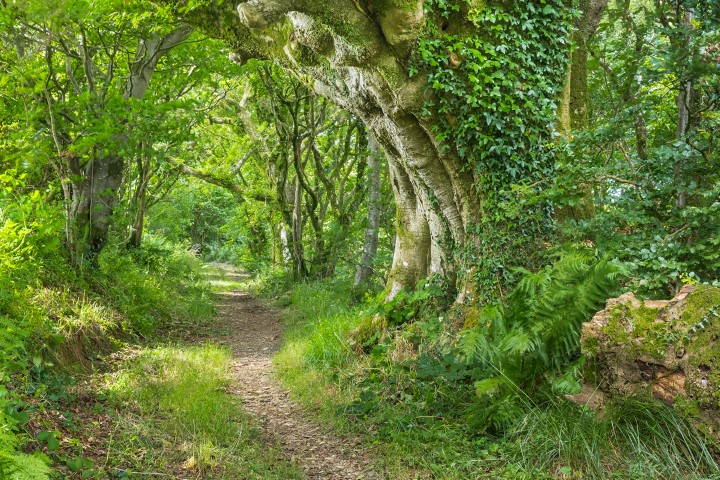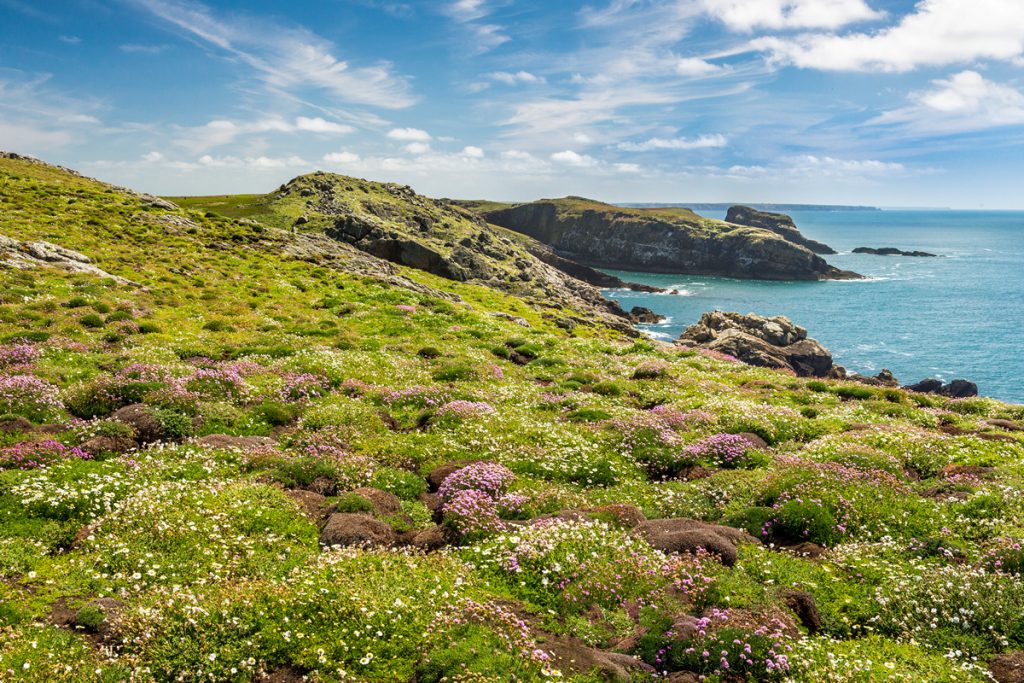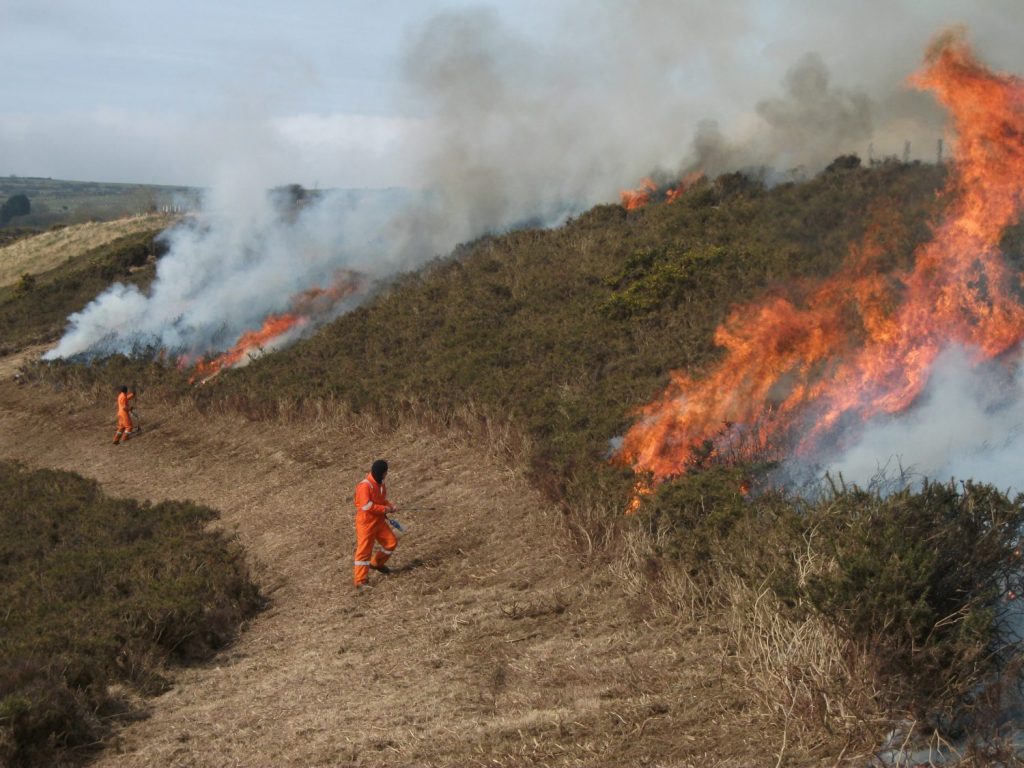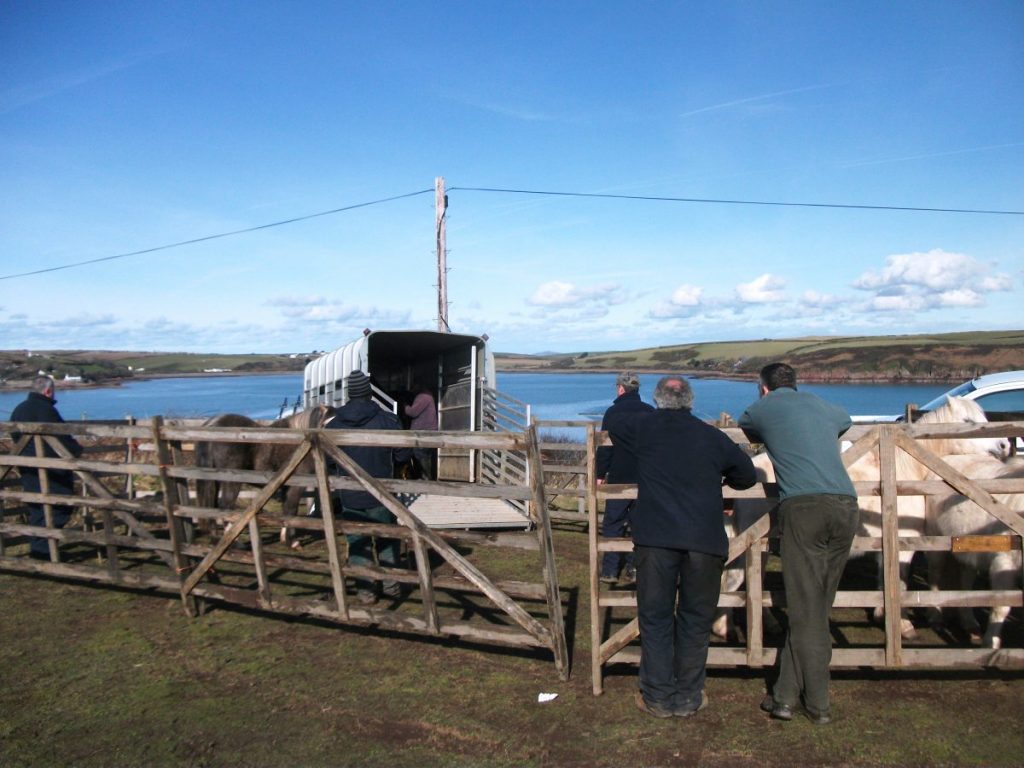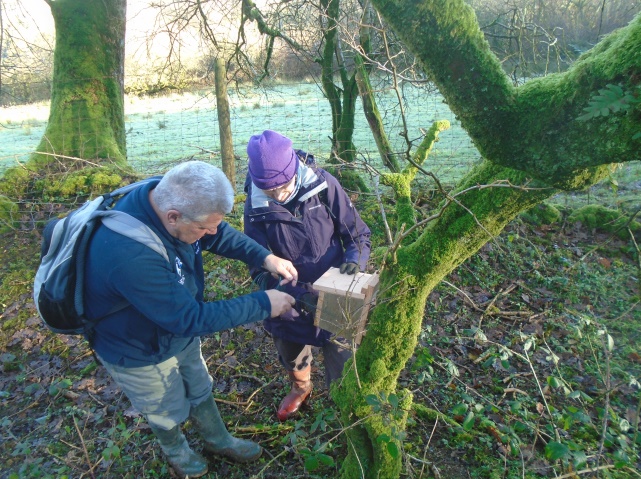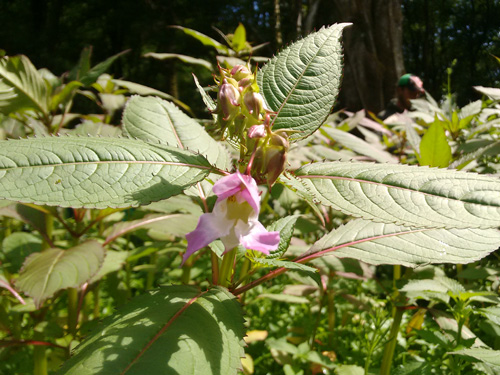In order to halt and reverse the decline and loss of our wildlife, we need to stop doing the things that destroyed habitats in the first place, and to start doing things that will gradually reinstate them.
We must continue to conserve the remaining habitats and the species that they support, which means offering a wide range of services to landowners, from advice and guidance through to grants and free practical assistance (Conserving the Park Scheme, Pembrokeshire Grazing Network). We must also start to develop more ecologically resilient landscapes by improving conditions for wildlife on intensively managed land.
This kind of change would immediately develop resilience in the wider countryside to support species – the wider countryside would be the wildlife corridor. It is precisely because the wider countryside is managed so intensively that we have lost so many species in the first place.
Agriculturally improved grasslands are typical of the lowland Welsh countryside today. They are used for grazing beef and dairy cattle and sheep, and can often be cut for silage two or three times a year. Fertilisers are added to the sward (an expanse of short grass) to help promote luxuriant grass growth.
A field like this will typically consist of one or two grass species and maybe two or three other plant species such as white clover and common mouse-ear.
There will be very few insect, bird or mammal species capable of surviving in grasslands like this. This is what most of the National Park countryside consists of, so is it any surprise that species populations have declined in the wider countryside?
The Welsh countryside used to consist mostly of species-rich hay meadows, but you don’t see many around now. Farmers used to graze these meadows with cattle, ponies and sheep in the winter months, and used to cut the grassland for hay in the summer.
A field like this will typically consist of six or seven grass species and maybe 12 to 15 other plant species.
There will be breeding skylarks and meadow pipits, and many species of insects and small mammals. Birds of prey (such as kestrel and barn owl) and bats will hunt over head.
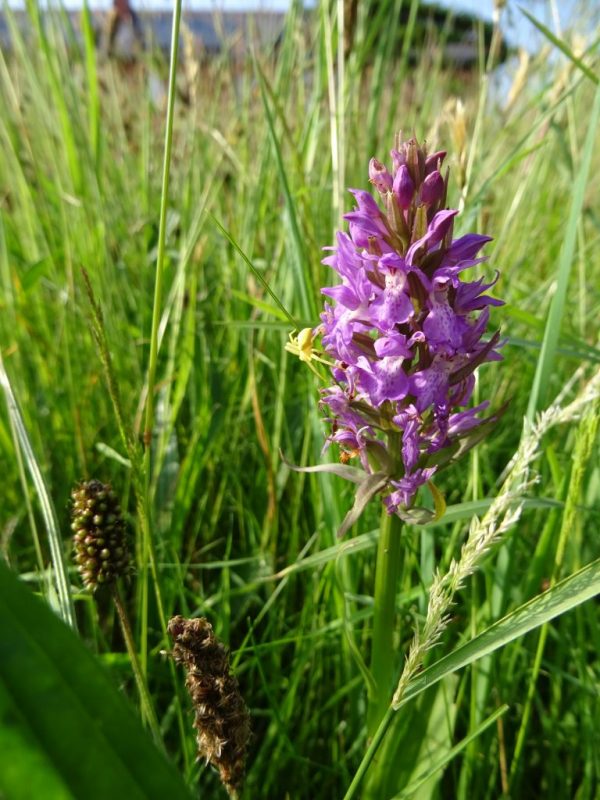
Why have we gone from one to the other?
The process of improving farmland fields to provide greater quantities of grass, so that greater numbers of livestock can be reared on the land has happened all over the UK during the past 60 years. It has happened because governments all over the world have encouraged farmers, through subsidies, to produce more food than ever before. So we have lost our hay meadows and wet pastures and all of the wildlife (or biodiversity) that they supported.
All we have left are a few small isolated sites where species populations are vulnerable.
So why do farmers manage their/our grasslands in this way?
We currently have a farming system (primarily dictated by the Common Agricultural Policy) that makes it economically unviable for most farmers to manage their grasslands as species-rich hay meadows.
National governments have to reform the system so that food produced from species-rich farmland provides farmers with a good income, thereby encouraging them to produce our food in this way. Until farmers are helped to produce our food in a way that actually benefits our wildlife, then it won’t happen, and climate change will merely exacerbate an already acute situation.
We all need to encourage markets for locally produced, wildlife-friendly food. Food produced in this way is great for wildlife and great for people.
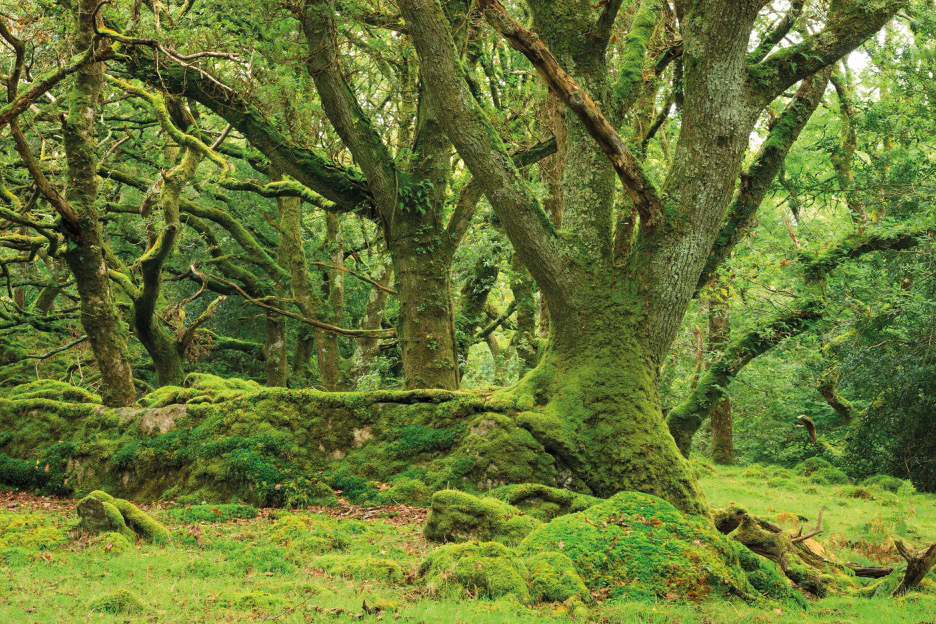
Woodlands
The wildlife and landscape quality of our native woodlands has declined significantly during the past 80 years. Timber markets, especially for small quantities of small-dimension hardwoods, have been almost non-existent in recent decades.
So, with little incentive for private woodland owners to manage their woodlands, there has been a decline in both the economic and wildlife value of many broadleaved woodlands. Other benefits of traditional woodland management include community and visitor amenity and enjoyment, encouragement of secondary industries and conservation of historic features.
The Park Authority’s desire is for our native woodlands to be kept at favourable conservation status – requiring a sustainable cycle of regeneration and sensitive management. A sustainable cycle would supply a thriving timber industry using local hardwoods in an unbroken chain from woodland through to timber processing and the manufacture of wood products.
This is why the Authority invested so much energy, enthusiasm and resources into creating more and better managed native woodlands in our landscape.
